Gemstones have been one of the most intriguing, captivating, and fascinating things nature has ever provided us with. Their beauty has mesmerized people ever since historic times. We see them being used in multiple products like amulets, jewelry, pottery, sculpture, etc throughout history in all civilizations. Since most gemstones had colors that were inspired by nature like Sapphires or Aquamarine(sea), Topaz (sun), Ruby (blood), people believed they held the power of nature within them. Gemstones were seen as a premium commodity and that still remains today. Many people love how classic and luxurious crystals and stones can make one feel. To know more about gemstone options and to source them, click here.
Deepwear has always had a strong leg when it comes to Sourcing precious and semi-precious stones. Our CEO Mr.Thoray d’Haese Sacoor is from Mozambique and has had a long history of family members who have been precious and semi-precious stone suppliers. We have places in Africa that support the ethical sourcing of gemstones and women’s empowerment this means, we can help your source the stones you require while supporting a noble cause. India is also a major player when it comes to dealing with precious and semi-precious stones. We have our own offices with our own exclusive team in New Delhi and Mumbai who can be on the ground to ensure you can source the best and most authentic stones in India from reliable precious and semi-precious stone suppliers. We also have our own exclusive headquarters in Thailand, where the main wholesale market of precious and semiprecious stone jewelry is very much accessible. Other than India and Thailand, we also have our exclusive offices in 11 other countries like China, Vietnam, Indonesia, Spain, Turkey, Morocco, Bulgaria, Portugal, France, Australia, the UK, and the USA.
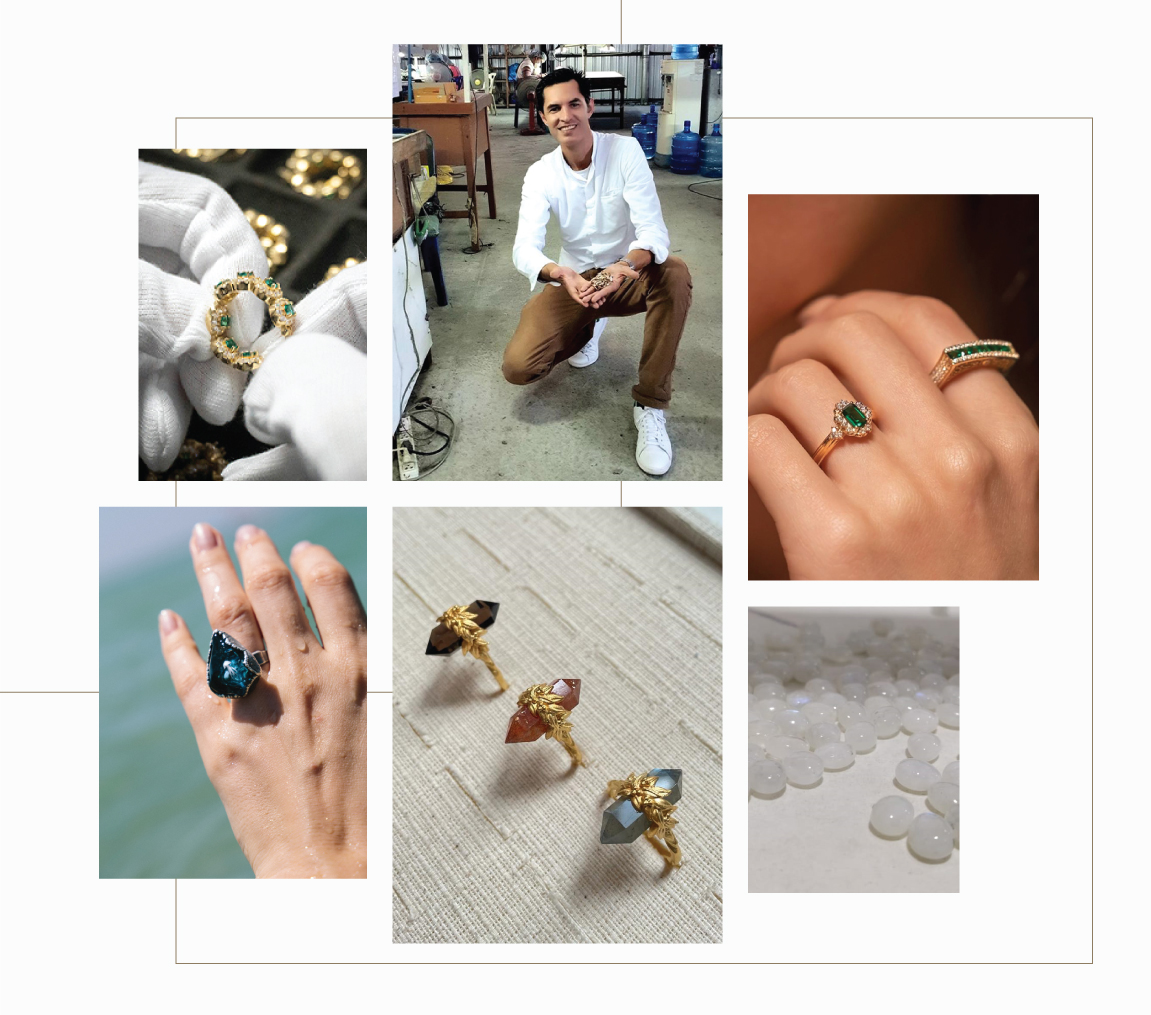
GEMSTONE USES
Gemstones are ideally used in jewelry. In fact, a majority of all sourced gemstones reach the jewelry industry. They can be made into rings, pendants, necklaces, tiaras, bracelets, etc. Honestly, the limit is endless, and it all depends upon how well you handle and honor these gemstones in your design. Not just in jewelry, Valuable gemstones can be used in a lot of different product categories like Bags, garments, hats, shoes, accessories, etc. A lot of big brands and labels utilize gemstones in their designs to add value and a touch of luxury to them. Gemstones can also be simply used as crystals and stones. Some people believe all gemstones possess a unique quality or power that can spiritually help us and so they collect the crystals of these gemstones.
4Cs, CUT, COLOR, CLARITY, AND CARAT WEIGHT
There are four main factors to focus on when it comes to understanding, choosing, buying, dealing with, or sourcing gemstones They are usually called the 4Cs. These 4Cs determine the difference between an affordable stone and the most expensive stone in the world
GEMSTONE COLOR:
The color of the gemstone is a big factor, that determines how precious or inexpensive a gemstone is. For example, if a Sapphire is vibrant in color, it will cost more than a Sapphire that is less saturated or is more transparent. Another aspect of color to take into consideration is the treatment the stone has gone through. Let’s say a Turquoise has been heat-treated to enhance the vibrant bluish-green, it will be comparatively affordable compared to an untreated vibrant Turquoise stone. Although stones being treated for better appearance, is quite common, it should be clearly mentioned by your supplier before selling the stones to you.
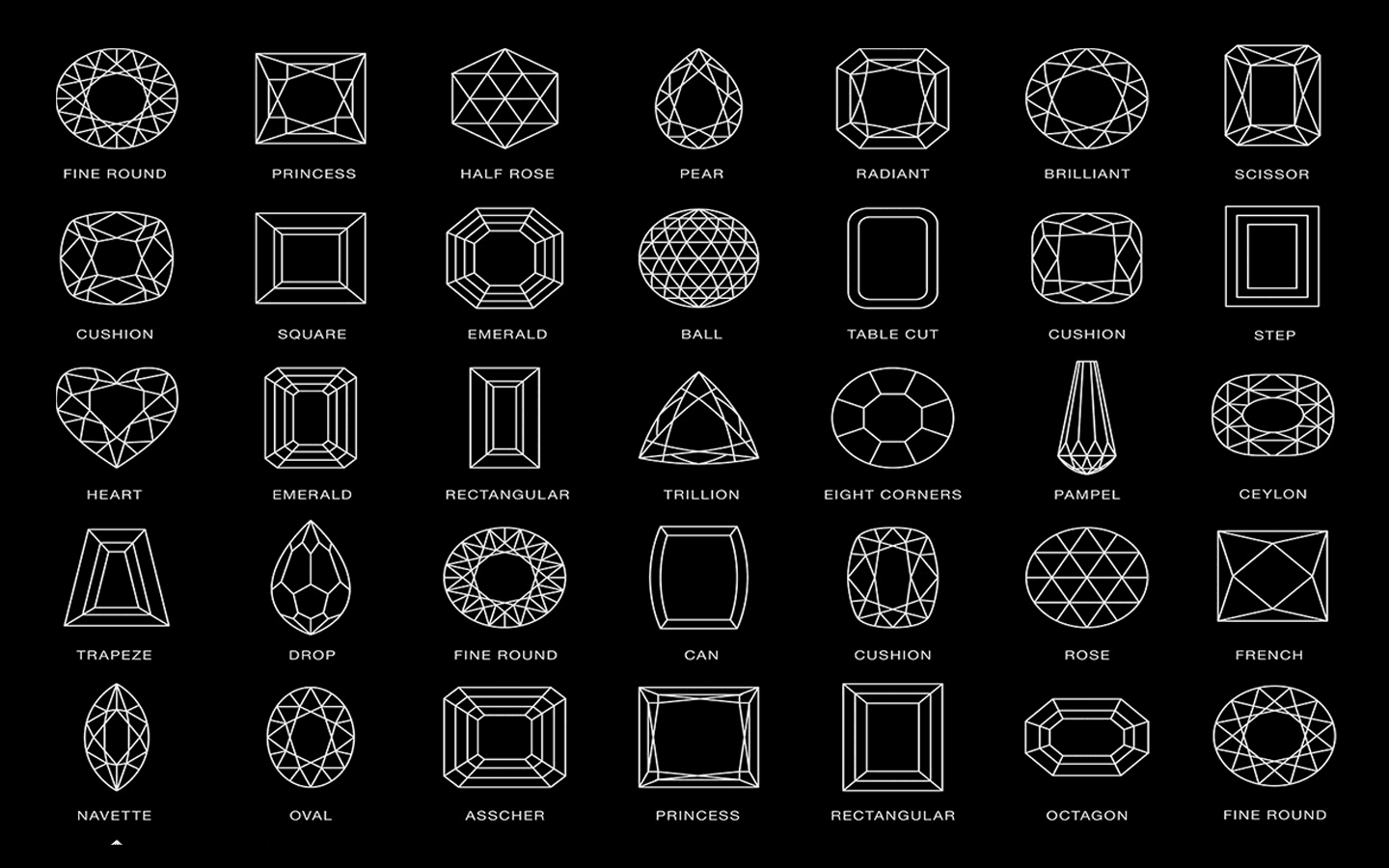
GEMSTONE CUTS:
The cut of the gemstone depends upon what kind of stone it is, how hard it is, and what kind of feature we would like to highlight. Also, the end-use of the product determines which cut would be the most optimal. There are multiple different cuts for gemstones like Princess cut, Cabochon cut, Emerald cut, Oval, Pear, Heart, etc.
GEMSTONE CLARITY:
Most gemstones are naturally mined, which means, we really do not have a hand in the making of the gemstone. The most we can do is get it maybe treated post-mining. But the composition and structure of the stone are not in our hands, which is why stones with fewer impurities, air bubbles, or other minerals embedded in them, are rare to find and hence costs more. Although nowadays, people are preferring to buy stones with impurities or streaks of other metals/materials in them since they form a mesmerizing beautiful pattern.
GEMSTONE CARAT WEIGHT :
Carat is a technical unit measurement used to determine the quality and density of a gemstone. Even when two gemstones have the same size, cut, and look pretty identical, they can both be of different carats. This is exactly why you need someone who is technically equipped to guide you better while sourcing gemstones.
TYPES OF PRECIOUS AND SEMI-PRECIOUS STONES
Precious stones are the four most commonly known and appreciated stones: Rubies, Emeralds, Sapphires, and Diamonds. All the other stones of value come under semiprecious stones. We go and source for every single gemstone project, and the fact that we have our own exclusive offices and our own exclusive and experienced team inside all countries that are prominent in dealing, trading, or production of precious and semi-precious stones like India, Thailand, China, etc, helps us access the local markets, which means we get the local benefits of price, but with International standards of quality and reliability. We work with a lot of Precious and Semi-precious stones like Emerald, Dalmatian quartz, Labradorite, Mop stone, Aquamarine, Opal stone, Tanzanite, Garnet, Amethyst, Quartz, Amazonite, Citrine, Onyx, Sapphire, Moonstone, Ruby, Peridot stone, Agate, Herkimer Diamond, Topz, Pearl, Lapis Lazuli, and Diamonds.
EMERALD
HOW DOES IT LOOK LIKE?
Being a part of the big four, the Emerald has sort of becoming synonymous with green precious stones. This particular stone has had a lot of appearances in ancient antiques since people believed this vibrant stone had a lot of powers associated with it.
EMERALD SIZE:
Emerald is a mineral stone which means they naturally appear in smaller sizes, and so finding a large stone is extremely rare. Just like we mentioned earlier, The cost of a gemstone is directly proportional to its size, But since Emerald precious stones are known for their vibrancy, a smaller vibrant emerald is much more preferred than a huge stone with a very little color
EMERALD SHAPE:
Emerald has a cut named after it, called the Emerald cut. This cut is usually used to display the natural beauty of a particular stone and conveniently also reduces wastage. Since natural Emeralds have beautiful colors, the cut we choose must highlight it.
SAPPHIRE
HOW DOES IT LOOK LIKE?
Sapphires are one of the most coveted precious natural stones. Their natural blue color is so vibrant that even the smallest stone can distinctly stand out in a design. Sapphires are usually associated with being romantic.
SAPPHIRE COLORS :
Sapphires are not just Blue, they come in an array of different hues and tones. There is a mineral called Corundum that forms the base for Sapphire stones. This is also found in Rubies. So all Red Corundum stones are ruby, and all the other colored and colorless stones fall under the umbrella of different types of Sapphires. Sapphires can be found in colors like Pink, Yellow, Purple, White(colorless), Orange, Green, and violet. With Sapphires, the more saturated and uniform the color, the value of the stone increases accordingly.
SAPPHIRE CLARITY:
Generally, Sapphire gemstones contain some sort of impurities or inclusions. The distinct fact is that sometimes these inclusions are in the form of long needle-like patterns and are called silk. Lab-grown Sapphires cannot imitate the inclusions and these inclusions can be used to differentiate between Natural and synthetic Sapphires. Sometimes you might find air bubbles in the precious stones, never buy them, because it means it is just a piece of colored glass and not real Sapphire.
With high demand, comes the high risk of being scammed or fooled. There are a few things you can do to check and understand Sapphires. Sapphires are stronger stones and are less likely to have scratched surfaces. So if you find a Sapphire with scratches, it is probably fake. Sapphires naturally are great thermal conductors. They do not retain fog for a duration longer than 2 seconds. To verify this, you can simply blow on the stone, and check how quickly the fog disappears.
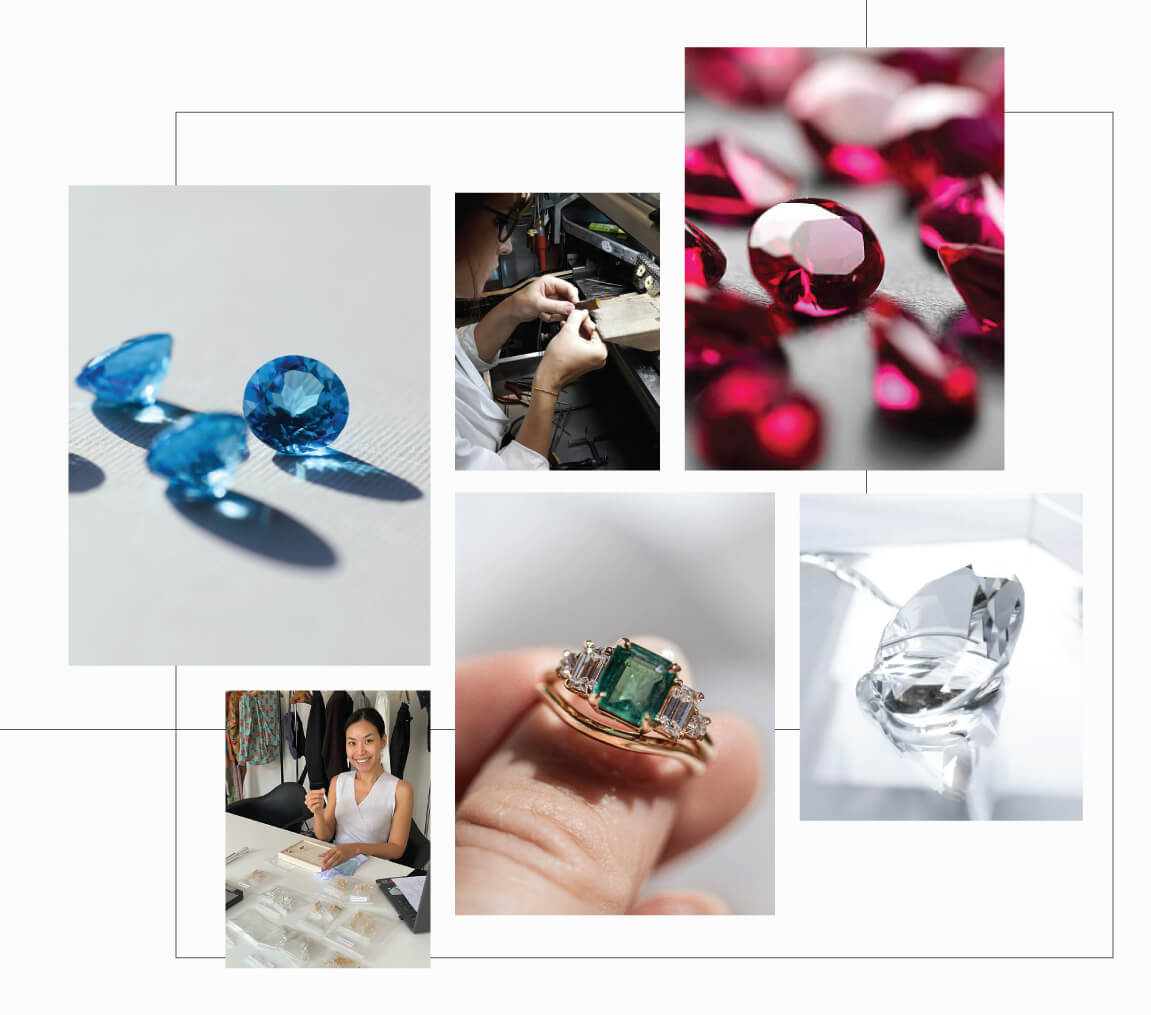
DIAMOND
HOW DOES IT LOOK LIKE?
Diamonds are just sparkling stars set to adorn our bodies. These transparent pieces of precious natural stones have been a part of the limelight forever. They work with every color, every style, are sleek, classy, and simply just luxurious.
DIAMOND COLOR:
The color of the diamond is generally and ideally white/transparent. But lesser-known colors like yellow, brown, orange, green, pink, red, blue, and purple can also be seen. The color of a diamond ranges from A to Z, With A being the most priced and Z being the least expensive.
DIAMOND CUT:
The cut of the diamond is extremely important. If a diamond is not cut properly, it can look dull and can sometimes even look like a piece of glass. Good cut diamonds can provide great reflection and makes it appear sparkly.
RUBY
There is something about Rubies that make a viewer be entranced by them. The blood-red color is simply captivating. In many cultures, Rubies represented life and were used as protective and healing symbols. Just like Sapphires, Rubies are also made up of the mineral Corundum which is one of the more durable precious stones.
HOW DOES IT LOOK LIKE?
RUBY COLOR:
Rubies are found in the most vibrant shades of Blood red. The color can range from a pinkish red, orangish-red to the most intense blood red and maroons. The more vibrant saturated the color is, the more sought after the stone is.
RUBY CUT :
Depending upon which property of the Ruby crystal you would like to highlight the preferred cut of the ruby can vary. If you would like the Rubies in your product to sparkle and glisten, it is preferred to have more angled cuts like the diamond. But on the other hand, if you prefer to highlight the intense color, then more open cuts like the oval cut or the emerald cut can be preferred.
AQUAMARINE
Like the name itself denotes, Aquamarine gemstones are well known for their pleasant Blue tones. Being a semi-precious stone, Aquamarine stones are an affordable option who want a sense of blue in their design and details.
HOW DOES IT LOOK LIKE?
AQUAMARINE COLOR:
This stone can be found in a varied range of blue shades ranging from a bright striking deep blue to a pleasantly pale translucent tone. Generally, it is common to find bluish stones with a hint of green in them, the more intense and strong the shades are, the higher the price range.
AQUAMARINE CUT:
These precious natural stones can be cut into multiple different cuts like the cushion cut, the marquise cut, the pear cut, etc. Round cut and princess cuts are also very much favored due to the color performance and sparkle of the stone.
A lot of Aquamarine gemstone dupes or fakes can be found in the market and it is important to know how to differentiate between a real stone and a fake. Since Aquamarine is a hard stone, it is quite resilient to scratches, and if you find a scratched surface, it’s probably just glass. It is impossible to find bubbles in an aquamarine stone, and if you find any, it is probably fake. Just like its name, one of the most distinct Aquamarine properties is that it is a cool stone, you can simply place the stone against your forehead and if it feels warm or even room temperature, it is fake. Topaz resembles Aquamarine in terms of color, and since topaz is more affordable, sometimes dealers pass off topaz as aquamarine. This is where you might require professional assistance from someone experienced like Deepwear to help you source the most authentic stones. Click here to start your gemstone sourcing.
TOPAZ
Topaz is a durable stone and can be used in multiple different ways. It comes in a range of colors but the most desired colors are warm tones like red, orange, golden, and yellow. Since these warm tones resemble a fire, this precious natural stone is named Topas after the Sanskrit word for fire ‘Tapas’. It was believed earlier that Topaz got its bright and scorching shades from the sun.
HOW DOES IT LOOK LIKE?
TOPAZ SIZE :
Topaz is a relatively inexpensive stone, and can generally be found in all kinds of sizes depending upon your preferences. The size of the stone can be an added factor while determining the price.
TOPAZ COLOR :
Topaz comes in a variety of colors, hues, and shades like Swiss Blue, sky blue, titanic blue, green, red, orange, yellow, golden, mystic brown, pink, purple, etc. The stone can range from a mild transparent shade to a bright and deep intense hue and the price varied accordingly.
TOPAS CUT :
Topaz is a great stone and can be cut into a lot of different shapes like the modern cushion cut, princess cut, round cut, etc. You can also opt for more open cuts like the Emerald cut or the Asscher cut which can bring out its color.
Sometimes cheaper stones like quartz or even glass can be sold in the name of a Topaz gemstone by scammers. This is why it is necessary to have a reputable guide like Deepwear who can source the best and most authentic gemstones for you.
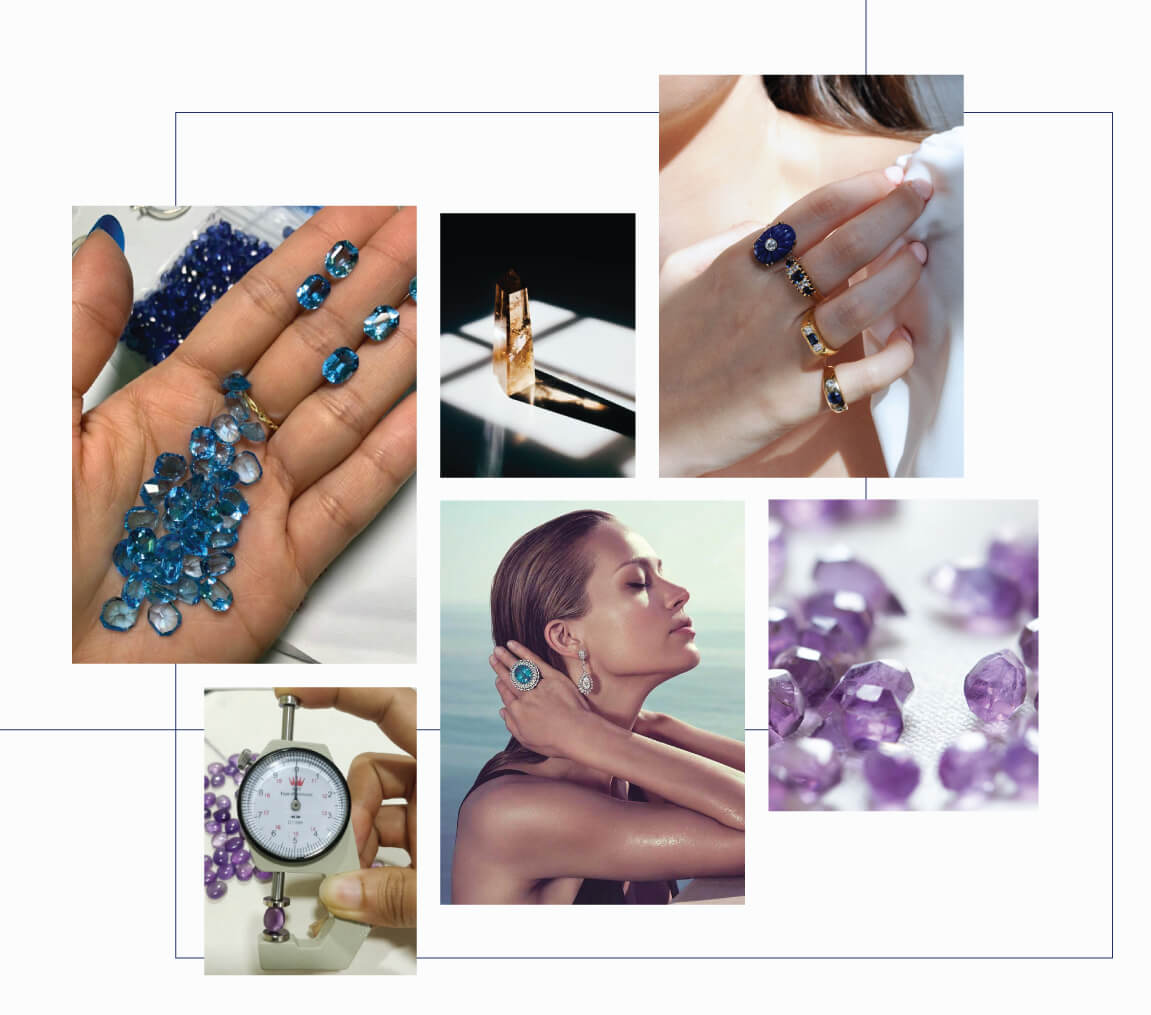
QUARTZ
HOW DOES IT LOOK LIKE?
Quartz is one of the most commonly found mineral stones in the world. Quartz is quite durable which makes it an excellent option for multiple uses. There are so many different types of quartz gemstones like the Smoky quartz, Amethyst crystals, Citrine, Rose quartz, Mystic quartz, Herkimer diamond, etc.
AMETHYST :
The Amethyst gemstone is one of the most beautiful, vibrant, rich, and captivating varieties of quartz. It is naturally found in its luscious purple color. There are different types of amethyst based on color and can vary from a light pale purple to deep intense violet color. Sometimes a reddish violet variety called the Pink Amethyst can also be seen. The vibrant purple and pink stones are the ones that have a higher value.
RUTILATED QUARTZ :
Rutilated quartz is an example of a beautiful mistake. It is a piece of stone that has these intriguing hair-like structures in it. It is still not clear how it’s formed, but most cultures associate Rutilated quartz with angels and other mystic beauties.
CITRINE :
Just like the citrus fruits, the Citrine gemstone is known for its Yellow-orange hues. Even though it is sometimes confused with Topaz due to its warm tones, the fact that it’s comparatively cheaper makes it one of the most accessible and bought Yellow gemstones in the market.
HERKIMER DIAMONDS :
Herkimer diamonds are clear stones that resemble diamonds from a distance. They are really old stones and can be found in a lot of ancient jewelry, tools, pendants, protective amulets, etc. They are a type of quartz with 18 natural facets. These are not mined from underground and are instead are mined above the surface, and so they are one of the more ethically and sustainably sourced crystals and stones compared to sourcing diamonds or other gemstones. These precious natural stones can be cut into multiple shapes as they are quite hard. They can vary from colorless transparent to a pale smoky color. In their colorless state, they resemble a diamond but upon closer look, we can see that they look a little glass-like as they do not possess the same structure and depth a diamond has.
ARE HERKIMER DIAMONDS REAL DIAMONDS?
No, they belong to the quartz family and are not diamonds. The name is simply just a misnomer because they appear to look like diamonds to an unprofessional set of eyes. This is why it is important to source things with someone experienced like Deepwear to help you source responsibly.
LAPIS LAZULI
Lapus Lazuli is a stone that has been used since the ancient times of Harappan, Egyptian and Mesopotamian civilizations. Most ancient cultures around the world believed its vibrant nature represented spiritual powers and hence it has a history of importance and can be found on many old artifacts all over the world.
HOW DOES IT LOOK LIKE?
LAPIS LAZULI COLOR :
Lapis lazuli is known for its strikingly opaque blue color. The stone ranges from a rich dark blue to violets and bluish green shades. Lapis Lazuli also has beautiful inclusions(impurities) which can vary from beautiful specks of gold, copper, and pearlescent shades from minerals like Pyrite, Calcite, etc.
LAPIS LAZULI STRENGTH :
Lapis lazuli does not have a specific hardness score, Since it is an amalgamation of multiple minerals, the hardness varies depending on which part of the stone you decide to test.
Lapis Lazuli is a comparatively cheaper stone, and unpolished raw stones can be souced at nominal prices. It is most commonly used as beads or cut into cabochon shapes, It is also used as tiles for mosaics, pottery, etc, and sometimes it is even sculpted into tiny statues and structures.
PEARLS
Pearls have always been very distinct simply because, unlike gemstones, pearls are not extracted from the earth, but instead, they are harvested from the sea. They require no additional finishes and are harvested ready to use in their raw and most natural form. They require no cutting, polishing, or finishing. They are subtle, gorgeous, and sophisticated, and are the epitome of class and luxury. Pearls might look like a simple material to source and work with, but those tiny drops of opaque, pearlescent stones have so many variants and factors to consider. To know more about natural pearl stones, check out our blog on, “A guide to choosing the right freshwater pearls”
LAB-CREATED GEMSTONES
Lab-created Gemstones are sometimes also called synthetic stones. These stones are created in laboratories. These crystals and stones are either made in high pressure and temperature environment, or they are made in a chemically induced environment. They are usually less expensive compared to conventionally mined crystals and stones. They are ethically and environmentally friendly gemstones.
ARE SYNTHETIC STONES AUTHENTIC?
Yes. Lab-created gemstones are synthesized in a controlled environment and are visually and structurally identical to precious natural stones. They are made of the same composition and materials as mined crystals and stones. However, since they are manually made, and since it’s impossible to include impurities in the stones, these gemstones do not include any inclusions. They are a great option for people who want to opt for affordable and environmentally friendly options.
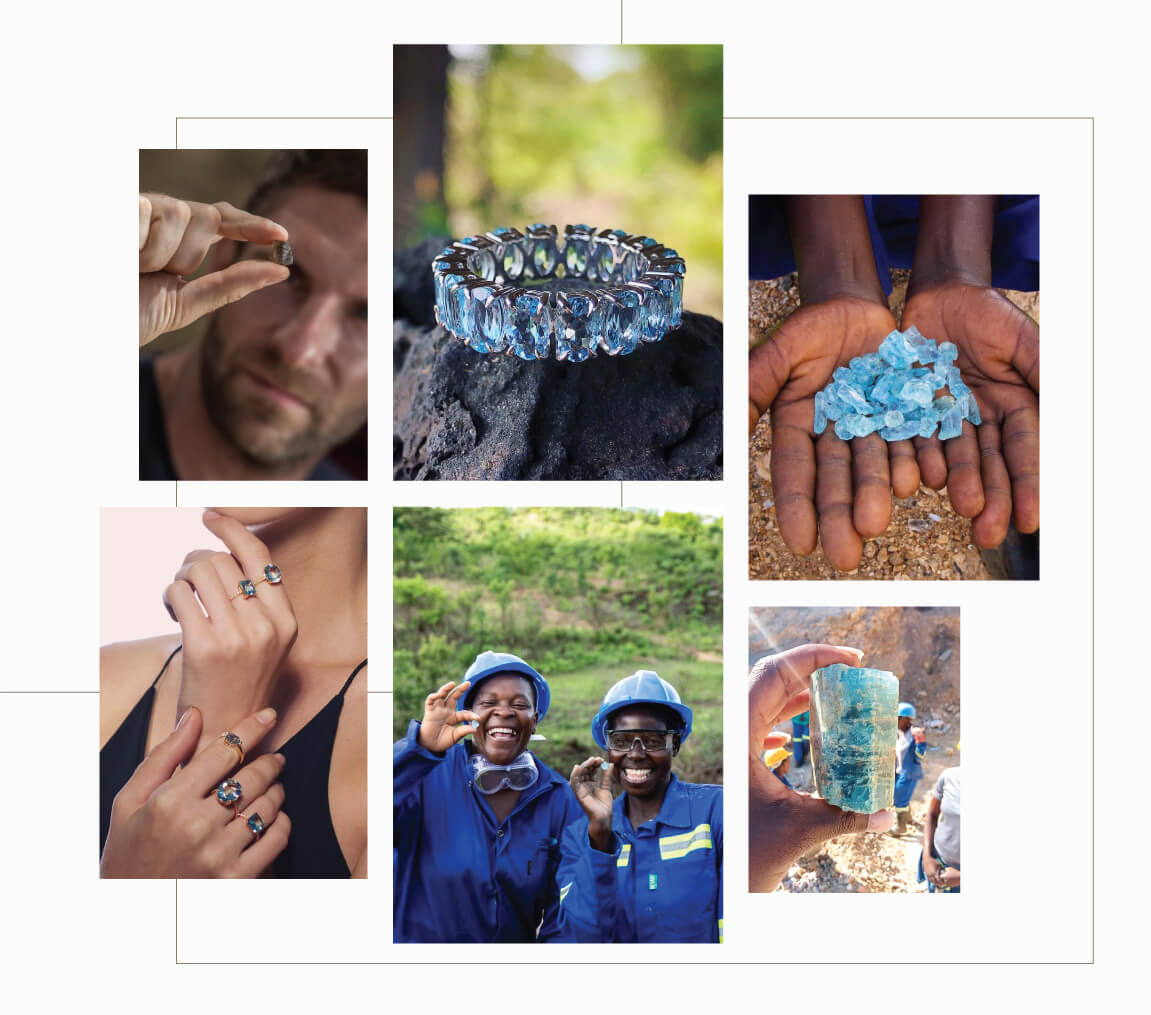
SOURCING THE RIGHT GEMSTONES
There are a lot of possibilities of mishaps and frauds that can happen when it comes to sourcing precious and semi-precious stones. To avoid them, you need to have specialized guidance and professional industry experience. At Deepwear, We have our In-house jewelry specialists who specialize in sourcing, dealing, and working with precious, semi-precious stones, and crystals. We can also facilitate lab tests and other confirmatory tests that prove the quality of the stones based on your request. To know more about our Jewelry sourcing services click here.
Regardless of which gemstone you choose or which quality or grade you prefer to source, It is important to have a good understanding of the industry of precious and semi-precious stones to avoid getting scammed and losing money. We can help you source the most affordable, ethical, authentic, and sustainably sourced crystals and stones with professional, care, guidance, and support. We can be your bodyguard on the ground, in the location of sourcing gemstones. To know more about our sourcing services, contact us.